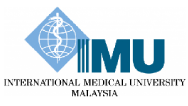Perception towards role in psychosocial care among the registered nurses in a private hospital in Kuala Lumpur, Malaysia
Authors: Pei Khim Lee, Wei Fern Siew, Wai Mun Tang.
ABSTRACT
Background: Psychosocial care remains an important component in holistic care nursing and is crucial for patients’ recovery outcomes.
Objective: The purpose of the study was to determine nurses’ perception towards their role in psychosocial care.
Methodology: The research design was descriptive and cross-sectional. Nurses’ Role in Psychosocial Care Questionnaire (NRPCQ) was used for data collection and approximately 110 registered nurses (response rate = 52.38%) participated in the study via convenience sampling. Descriptive and inferential statistics, Mann-Whitney U test were used for data analysis.
Results: In general, nurses’ perception towards their role in providing psychosocial care was positive (M = 73.71, SD ± 12.20). Items on “demonstrating warmth and friendliness by smiling” (M = 3.92, SD ± 0.28); and “explaining nursing procedures or interventions to the patient” (M = 3.88, SD ± 0.32) were rated most positive. Nevertheless, items on “referring patients to other health care team members” (M = 3.32, SD ± 0.83), and “discussing with patient and patient’s family regarding planned care” (M = 3.44, SD ± 0.69) were rated the least positive. The Mann-Whitney U test analysis revealed significant association between nurses’ age and perception towards their role in psychosocial care (p = 0.025), in which the older nurses have a more positive perception towards their role in psychosocial care than the younger nurses.
Conclusion: The findings highlighted some important gaps in the practice of psychosocial care among the registered nurses. The information serves as a baseline for the planning and implementing of relevant strategies in enhancing nurses’ role in psychosocial care provision.
Keywords: Perception, role, psychosocial care, registered nurses, hospital.
Citation: IeJSME 2018 12(3): 21-29

